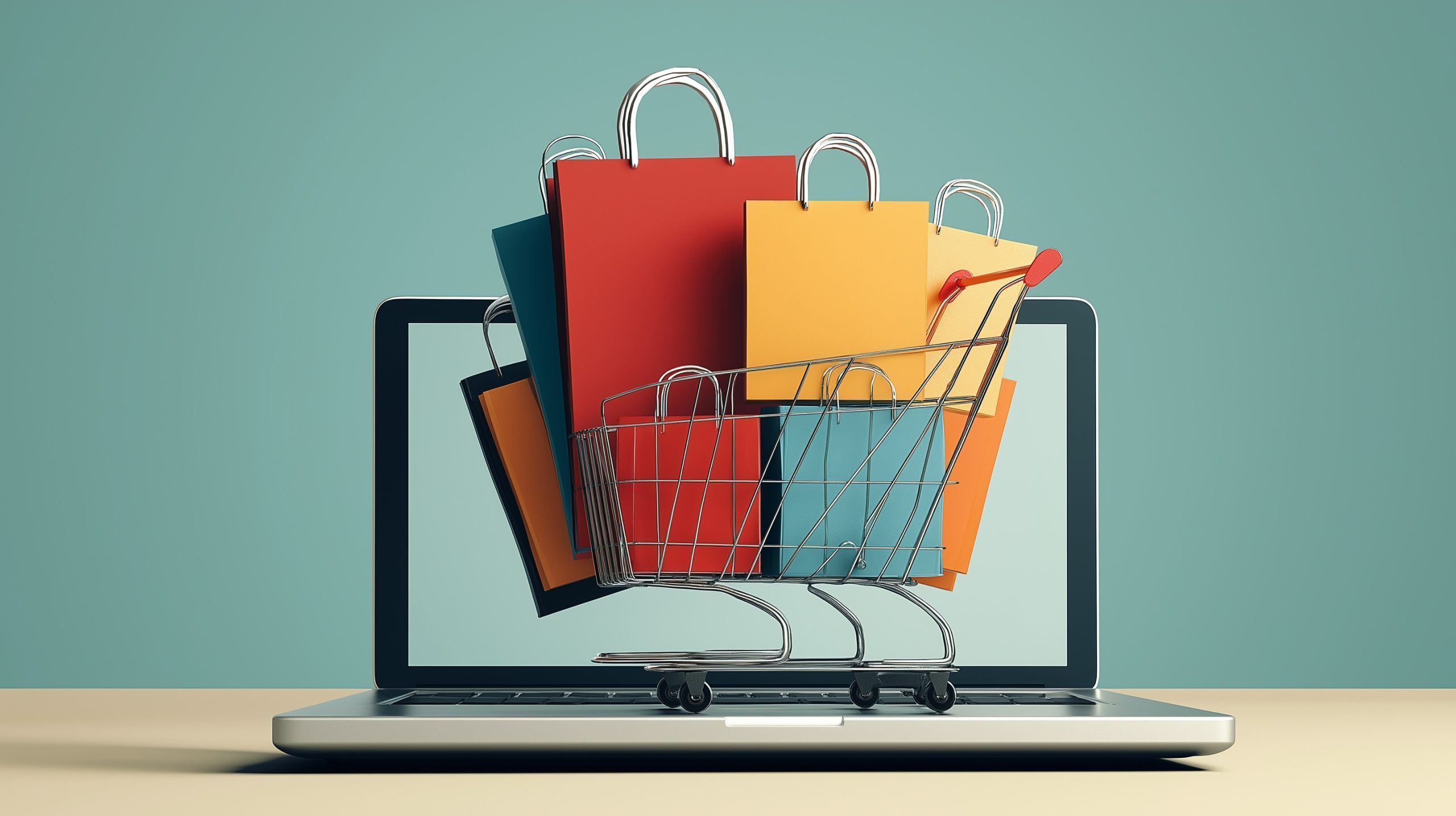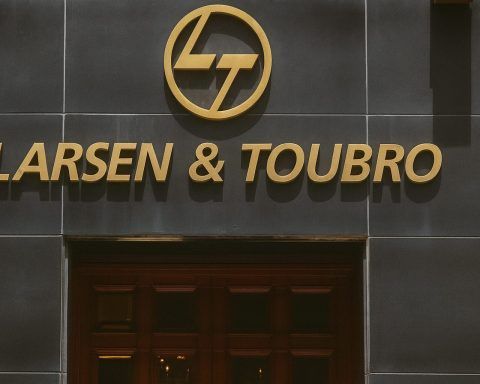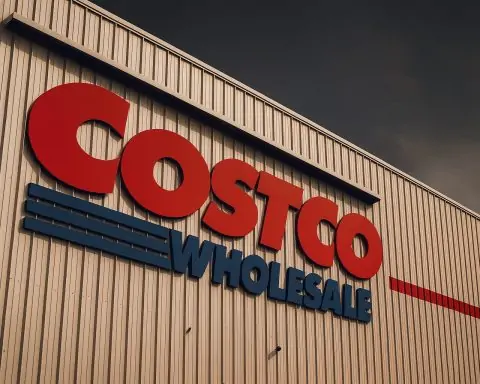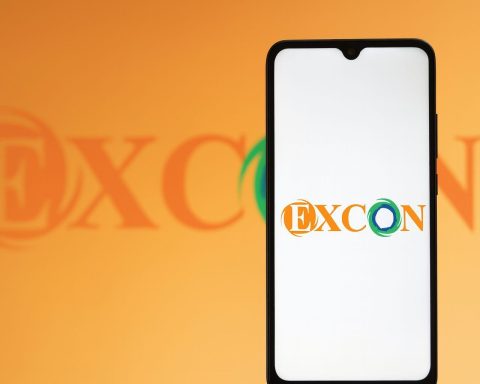Global Marketplace Highlights (B2C & B2B)
- Amazon: Amazon announced that its flagship Prime Day 2025 sale will run for four days (July 8–11), marking the longest Prime Day ever [1]. This extended event is expected to intensify competition among online sellers, but also create more sales opportunities – as one expert noted, “Four days of Prime Day means more competition and more opportunity” for brands that use real-time tools to adjust pricing, inventory, and ad spend during the rush [2]. Internationally, Amazon is doubling down on growth markets. In India, the company will invest over ₹20 billion (≈$233 million) in 2025 to expand its operations infrastructure, launching new fulfillment sites and upgrading delivery facilities to improve speed and safety [3] [4]. This builds on Amazon’s pledge to reach $26 billion invested in India by 2030 [5]. Amazon also expanded its B2B footprint – in June it launched Amazon Business in Australia, its 10th country for the business marketplace, tapping into an estimated A$76 billion (US$50 billion) B2B e-commerce market [6] [7]. On the consumer side, Amazon is navigating regulatory pressures: it pledged to crack down harder on fake product reviews after a UK investigation, promising improved detection and stricter penalties on sellers who abuse ratings [8] [9]. Meanwhile, U.S. regulators are scrutinizing Amazon’s practices – a June 2025 trial is set for an FTC case alleging Amazon used deceptive “dark patterns” to enroll shoppers in Prime and hinder cancellations [10] [11]. Amazon denies wrongdoing, but this and a major antitrust suit (filed by the FTC and 17 states in late 2023) could potentially force structural changes to Amazon’s marketplace if the government prevails [12]. Despite these challenges, Amazon’s e-commerce empire continues to grow: the company is expanding in Latin America, the Middle East, and Europe, and gearing up for a massive Prime Day and holiday season while emphasizing cost efficiencies under CEO Andy Jassy [13].
- Walmart: The retail giant is directly challenging Amazon’s summer sale. Walmart’s “Deals – Summer Savings” event will run almost concurrently (July 8–13) offering deep discounts on electronics, toys, home goods, fashion and even early back-to-school supplies [14] [15]. With upgraded delivery options (including new Express Delivery) and an AI-powered shopping app, Walmart is aiming to make the customer experience “bigger, better” and compete head-to-head with Prime Day [16] [17]. Walmart is also innovating in financial services: its fintech affiliate One (majority-owned by Walmart) is launching two new credit cards in fall 2025 in partnership with Synchrony, including a general Mastercard and a private-label Walmart card [18] [19]. This move follows One’s recent integration of buy-now-pay-later (BNPL) options (via Klarna) and is part of Walmart’s strategy to expand its payments ecosystem. In logistics, Walmart significantly expanded drone deliveries in June – partnering with Alphabet’s Wing to add drone service at 100 more stores across five U.S. states, reaching 3 million additional households [20] [21]. After years of tests, Walmart’s drones have completed 150,000+ deliveries, mostly small items like groceries and medicines, in as fast as 20 minutes per drop [22] [23]. Walmart’s goal is to leverage technology to meet “instant delivery” expectations without prohibitive cost, as competition in rapid fulfillment grows.
- Alibaba: China’s e-commerce titan undertook a major restructuring to streamline operations amid fierce domestic competition and a lukewarm consumer economy. On June 23, Alibaba announced it will merge its food delivery app Ele.me and travel booking site Fliggy into its core e-commerce division, as part of a “strategic upgrade” toward a more unified, consumer-focused platform [24] [25]. This consolidation reflects an effort to cut costs and boost synergy as Chinese e-commerce firms engage in a price war, including aggressive moves into “instant retail” (30–60 minute delivery services) to attract shoppers [26]. Alibaba’s leadership stated the company is pivoting from traditional e-commerce to a broader digital consumer ecosystem, promising to optimize business models “from the user’s perspective” and deliver higher-quality consumer experiences [27]. The backdrop to these moves is a challenging Chinese market in 2025: economic uncertainty (a lingering property sector crisis and trade policy tensions) has dampened consumer spending [28]. Thus, Alibaba is doubling down on efficiency and new growth areas (like AI-driven retail solutions) to reignite momentum. Notably, Alibaba and peers JD.com and Pinduoduo have been slashing prices and investing in ultrafast delivery; Alibaba’s restructure is seen as positioning it to compete in this new era of frugal, convenience-oriented Chinese e-commerce. (It also dovetails with Alibaba’s broader reorganization into separate business units announced earlier, aiming for potential spinoffs or IPOs of divisions such as logistics and cloud in the future.)
- Shopify: The Canadian e-commerce platform made waves in payments and faced legal challenges in June. Shopify partnered with Coinbase and Stripe to enable merchants globally to accept USDC stablecoin payments natively on Shopify stores [29]. Customers can now pay with the dollar-pegged cryptocurrency, with Shopify handling conversion to the merchant’s local currency and depositing funds to their bank – all with no additional fees or technical blockchain knowledge needed [30] [31]. This stablecoin integration (using Coinbase’s new “Base” network) allows 24/7, low-cost transactions and is touted as a way to support cross-border sales without currency exchange friction [32] [33]. On the legal front, Shopify was sued by BNPL provider Sezzle in an antitrust case alleging Shopify engaged in monopolistic practices by favoring its own installment payment option (Shop Pay Installments, powered by Affirm) and hindering competitors like Sezzle [34] [35]. The lawsuit claims Shopify even feigned interest in investing in Sezzle back in 2018 to glean inside information, then copied its BNPL model [36]. If Sezzle prevails, it could upend Shopify’s tight control over payment methods and open the door for rival payment services on the platform [37]. Separately, Shopify scored a win in a data privacy dispute: a Canadian judge ruled in June that Shopify did not have to turn over six years of merchant records that tax authorities in Canada and Australia had sought. The court called the tax agency’s request “overly broad” and an undue invasion of privacy, ordering Shopify to protect its merchants’ data [38] [39]. In product news, Shopify decided to shut down Linkpop, its free “link-in-bio” mini storefront service, as of July 7, 2025. Launched in 2022, Linkpop let creators sell via a shoppable page, but Shopify gave little explanation for the closure beyond redirecting users to third-party alternatives [40]. The move suggests Shopify is focusing on core commerce tools and culling low-performing side products.
- MercadoLibre: Latin America’s e-commerce leader is doubling down on customer incentives amid intensifying competition in Brazil. In June, MercadoLibre slashed its free-shipping minimum in Brazil from R$79 to just R$19 (~US$3.40) – meaning virtually any order now ships free [41] [42]. “Practically the entire site will have free shipping from now on,” said Fernando Yunes, MercadoLibre’s Brazil e-commerce chief [43]. This bold subsidy will be costly for the company (which is absorbing the shipping fees itself), but MercadoLibre hopes it will boost sales and loyalty as it battles rivals like Amazon, Shopee (Sea Ltd.), and newcomers like Temu in its most crucial market [44] [45]. The company also confirmed it has been discounting shipping costs for sellers by up to 40% since late May to help merchants be more competitive on price [46]. Analysts noted that MercadoLibre’s steeper discounts target price ranges where Shopee has been gaining traction [47]. This aggressive strategy underscores the stakes in Latin America’s booming e-commerce sector: MercadoLibre now derives over half its e-commerce revenue from Brazil [48], and it’s leveraging its logistics network (which includes an expanding fleet of planes and delivery hubs) to maintain its market lead. In recognition of its impact, TIME Magazine named MercadoLibre one of the “TIME100” Most Influential Companies of 2025 [49] [50], citing how the company’s platform and fintech arm (Mercado Pago) are reshaping commerce and financial inclusion in the region.
- Flipkart: Walmart-owned Flipkart, India’s largest online marketplace, reached a financial services milestone in June by securing an NBFC (Non-Bank Financial Company) lending license from the Reserve Bank of India [51] [52]. This makes Flipkart the first major e-commerce platform in India to obtain a license to lend directly to consumers and sellers [53]. Previously, e-commerce firms had to partner with banks or NBFCs for financing offers – but now Flipkart can offer credit from its own books, a potentially lucrative expansion into fintech. The company plans to use the license to provide installment loans and other financing to shoppers on its site, as well as working capital loans to marketplace sellers, via its Flipkart Finance arm and its fintech app SuperMoney [54] [55]. Flipkart applied for this license back in 2022 and received final approval in March 2025 [56] [57]. Internal preparations are underway to launch the lending business within a few months, pending hiring of key personnel and board approvals [58]. Flipkart’s move comes as Walmart increasingly integrates its Indian operations – Flipkart recently shifted its incorporation from Singapore to India and is expected to go public in the coming years [59]. Notably, rival Amazon has also pushed into Indian fintech: earlier in 2025 Amazon acquired a small Indian lender (Snapdeal’s Axio) to bolster its credit offerings, though that deal awaits regulatory clearance [60]. Flipkart’s new license indicates a broader trend of e-commerce platforms offering banking-like services, aiming to drive sales through EMI (installment) offers and to earn interest revenue, all while supporting sellers with capital.
- TikTok & Social Commerce: In the social media realm, TikTok is rapidly emerging as a shopping platform, though not without hurdles. A new YouGov survey found that nearly one-third of U.S. TikTok users (about 33%) have made a purchase on TikTok Shop in the past year [61] [62]. TikTok’s integration of shopping features – from in-app product links to live-stream commerce – is engaging a broad user base, with especially strong uptake among users aged 35–54, who have outpaced younger users in TikTok shopping activity [63]. Most TikTok buyers spent under $50 per purchase, often lured by low prices and deals (which respondents said outweighed influencer hype as the motivation to buy) [64] [65]. The most popular categories on TikTok Shop have been apparel, electronics, home goods, and food [66]. However, consumer trust remains a barrier: while 60% of U.S. adults watch live-shopping streams (many on TikTok Live), only 33% have actually bought something via live commerce, with viewers citing concerns that hosts are more entertaining than reliable [67] [68]. TikTok is working to bridge this trust gap – in late June it introduced new seller badges (e.g. “Official Shop”, “Authorized Seller”, “Gold Star”) to denote reputable merchants who meet high service standards [69] [70]. These badges will appear on live videos, product pages and search results to reassure shoppers and reward top sellers. TikTok is also reportedly shifting its strategy to rely more on paid advertising for product exposure, as the promise of free viral reach for merchants has waned in 2025 [71] [72]. Meanwhile, rival social platforms are retrenching: Meta (Facebook/Instagram) decided to remove the Shops feature’s native checkout in Europe (reverting to external website checkouts) as it grapples with new EU regulations [73]. Meta is even in a legal tussle with the EU, arguing that its Facebook Marketplace shouldn’t be regulated as a core “platform service” under the Digital Markets Act [74] [75]. Overall, social commerce is at a crossroads in mid-2025 – TikTok is investing in it heavily, leveraging its entertainment factor, while some incumbents are scaling back or fighting regulatory constraints.
- eBay and Other Platforms: eBay has been striving to reinvent parts of its marketplace to keep up with trends. In June, eBay launched a new Live Shopping “roadshow” across the U.S., hosting in-person trading events for enthusiasts and streaming them online [76] [77]. This campaign is aimed at reviving eBay Live (its live commerce feature) by tapping into hobby communities (collectibles, trading cards, etc.) – a strategy focusing on eBay’s core “enthusiast” buyers who make 6+ purchases a year and spend $800+ on site [78] [79]. Critics note eBay tried similar live-shopping pushes before with limited success, but the company hopes a community-oriented approach will generate authentic engagement and sales [80]. eBay also made headlines for a technical snafu: many sellers were shocked by retroactive charges for “Promoted Listings” ad fees on sales dating back to January. Sellers reported being billed multiple times for the same ad transaction, and eBay’s support gave conflicting answers (some called it a known bug; others claimed the charges were valid) [81] [82]. This issue – similar to glitches eBay has had in past years – caused an outcry over eBay’s aggressive monetization of seller ads. Among other players: Temu and Shein, two fast-growing Chinese shopping apps, saw a significant drop in U.S. usage in Q2 2025 as new U.S. tariffs on Chinese e-commerce imports took effect. By May, Temu’s daily active users had plummeted 48% from March levels, and Shein’s were down 25%, according to Sensor Tower data [83] [84]. Both apps also tumbled in the App Store download rankings. The steep decline follows the end of a tariff exemption (de minimis) that many low-cost Chinese parcels enjoyed, as well as a pullback in advertising spend by Temu and Shein in the wake of higher import costs [85]. This suggests geopolitical trade measures are reshaping the ultra-low-price segment of e-commerce. Finally, in Europe, new accessibility regulations came into force: as of June 28, the EU’s European Accessibility Act (EAA) requires e-commerce websites and digital products to meet specific accessibility standards for users with disabilities. Online marketplaces like Bol.com have started urging sellers to ensure product listings (descriptions, media, etc.) are screen-reader friendly and comply with the EAA, since non-compliant new products risk removal or fines [86] [87]. While existing listings have a grace period, any new products introduced after June 28 must be compliant from day one [88]. Marketplace advisors see this not just as a legal duty but as a growth opportunity: more accessible content can broaden audience reach and “boost conversion” by including shoppers who were previously underserved [89].
Innovations in E-Commerce Infrastructure & Technology
Leading e-commerce companies made significant infrastructure and tech upgrades in mid-2025 to improve performance and scalability:
- Cloud & Data Centers: Robust back-end infrastructure remains a priority as online sales grow. Amazon, for instance, committed to major cloud and fulfillment investments: beyond its aforementioned $233 million operations investment in India [90], Amazon Web Services (AWS) is separately investing $8.2 billion to expand data centers in India by 2030 [91] as cloud demand rises. In June, Amazon also announced a plan to spend A$20 billion (~$13 billion) from 2025–2029 to expand its data center infrastructure in Australia (bolstering AI and cloud capacity in that region) [92]. These moves highlight how e-commerce giants are also cloud providers building the digital infrastructure that underpins global online marketplaces. Other tech firms are following suit: Microsoft reported 33% YoY growth in its Azure cloud (Q1 2025) driven by AI workloads [93], and Google is rolling out generative AI in search while expanding its cloud footprint – all of which ultimately supports richer, more scalable e-commerce experiences.
- Artificial Intelligence (AI) Integration: AI is permeating every layer of e-commerce in 2025, from customer-facing features to back-end automation. Amazon launched a generative AI tool for sellers that can instantly produce professional-quality video ads for products. The free tool, unveiled in June for Amazon’s Sponsored Brands program, lets sellers create a photorealistic product video in under 5 minutes by leveraging Amazon’s own retail data and AI imagery [94] [95]. This lowers the barrier for small brands to add video content to their listings, which can improve conversion. Shopify’s platform also benefits from AI enhancements (the company has been infusing its admin with AI-driven writing and design assistants since earlier in 2025), and Shopify’s Chief Design Officer even argued that designers should move beyond routine “UX” work that AI can handle, and focus on creativity and human-centered design – a philosophical shift as AI takes over rote tasks [96] [97]. In e-commerce marketing, AI-driven personalization is a key trend: retailers are increasingly using algorithms to tailor site content, search results, and promotions to each shopper. By mid-2025, AI recommendation engines and chatbots have become standard on large retail sites, and newer AI like OpenAI’s GPT-4 is starting to be used for customer service chats and even generative product descriptions. Square provided a glimpse of AI’s utility for small businesses by launching Square AI, a conversational assistant that sellers can query for insights about their sales or operations [98] [99]. Square AI acts like a “virtual employee,” analyzing the merchant’s data to answer questions about inventory, customer behavior, and more. This underscores how AI can democratize analytics – even a small shop owner can ask, for example, “Which product category had the fastest sales growth this month?” and get an instant answer from their data. On the consumer interface side, augmented reality (AR) and AI are merging to create new shopping experiences. A notable example is Glance AI, a generative AI shopping platform launched in June by Google-backed startup Glance [100]. Glance’s app (rolling out to some Android lock screens) lets users take a selfie and then visualize outfits on themselves, using AI to virtually “try on” clothes, and even purchase directly from the lock screen [101] [102]. By partnering with hundreds of retailers, this innovation aims to turn the phone’s lock screen into a personalized, AI-curated mall. It reflects a broader industry push toward visual discovery and AI styling assistants that can recommend products in a more engaging way than traditional text searches.
- Headless & Modular Commerce: Many e-commerce providers and brands are embracing headless commerce architecture in 2025 – separating the front-end storefront from back-end systems – to gain flexibility. This trend isn’t tied to a single June–July event, but it underpins several developments. For example, BigCommerce (a Shopify rival) has been doubling down on B2B features and headless integrations since early 2025 [103], enabling merchants to use BigCommerce as a commerce engine while building custom front-ends (e.g. in content management systems or mobile apps). In June, Shopify also introduced updates to its APIs and Storefront SDKs to better support headless storefronts and custom checkout experiences, responding to growing merchant demand for differentiation. The benefit of headless is that retailers can deliver ultra-fast, app-like web experiences and integrate commerce into any digital touchpoint (web, mobile, voice, social) without being confined to a templated site. Many mid-market and enterprise merchants spent the first half of 2025 replatforming onto headless setups using vendors like CommerceTools, Fabric, or Shopify’s Hydrogen framework. This enables quicker adaptation – for instance, deploying a site update or new sales channel without overhauling the entire back-end. While not a headline-grabbing news item, the continued shift to headless infrastructure is a foundational trend for e-commerce tech, allowing faster innovation in customer experience.
- Blockchain and Web3: Aside from the stablecoin payments integration (covered in the Payments section), there is a broader exploration of blockchain tech in commerce. By mid-2025, several brands and marketplaces were experimenting with token-gated commerce (exclusive products or discounts accessible only to holders of a brand’s NFTs or tokens) and digital collectibles as loyalty incentives. Though not mainstream yet, this period saw steady interest in Web3 commerce pilots. For example, on Shopify, some merchants have begun issuing NFT-based loyalty tokens that shoppers can store in a digital wallet and redeem for perks. Likewise, eBay – after its 2022 acquisition of the NFT marketplace KnownOrigin – hinted at future integration of digital collectibles for trading cards and art on its platform (though nothing official launched by July). These initiatives indicate that e-commerce infrastructure may gradually incorporate decentralized elements, such as verified digital ownership and crypto payments, especially as regulatory clarity improves. (It’s worth noting that regulatory scrutiny on crypto remained high in mid-2025, which tempered some Web3 commerce rollouts.)
Payments and Fintech Updates in E-Commerce
The intersection of e-commerce and financial technology saw major developments in June–July 2025, as platforms and payment providers rolled out new options:
- Stablecoin Payments Go Mainstream: A milestone was reached in June when Shopify, Coinbase, and Stripe partnered to bring stablecoin payments to millions of online merchants [104]. As described above, Shopify now supports USDC (USD Coin), a popular dollar-backed stablecoin, as a payment method for shoppers. This means a customer anywhere in the world can pay a Shopify store in crypto-dollars (USDC) and the merchant will receive the equivalent value in their local currency, with all conversion handled behind the scenes [105] [106]. The service operates 24/7 and settles nearly instantly, unlike card payments that can take days to clear. Stripe is enabling these stablecoin checkouts via its Stripe Connect platform, and Coinbase’s new Coinbase Payments stack processes the crypto transactions on Base, Coinbase’s own Ethereum layer-2 network [107]. The goal is to eliminate cross-border payment friction – no more high credit card forex fees or waiting for bank wires; a customer in Brazil or Nigeria can pay a U.S. merchant in USDC just as easily as a U.S. customer could pay in USD. According to Coinbase, “stablecoins facilitated $30 trillion in transactions last year, tripling year-over-year” [108], highlighting the rapid growth of this medium. This initiative by Shopify et al. is widely seen as a tipping point that could make crypto payments feel “normal” to consumers. Industry observers noted that by hiding the blockchain complexity (no crypto wallet setup needed for merchants, and even customers can use familiar apps like Coinbase Wallet or MetaMask), this approach makes stablecoins as easy to use as PayPal or a credit card [109] [110]. It also offers advantages like lower transaction fees and no chargebacks. PayPal itself has been eyeing this space – it launched its own USD stablecoin (PYUSD) in 2023 and continues to integrate crypto features. In June, PayPal took another fintech step by partnering with travel payment startup Selfbook to allow booking hotels directly inside the PayPal app [111] [112], a move that hints at PayPal’s ambition to be a super-app for commerce and payments.
- Buy Now, Pay Later (BNPL) Evolution: The BNPL sector in 2025 is maturing and adapting. The days of breakneck growth are over, and BNPL providers are expanding into traditional finance products. In fact, we’ve come full circle: several BNPL firms are now launching old-fashioned credit cards. Industry chatter joked that “credit cards are hot again” as BNPL startups embrace the very medium they once sought to disrupt [113] [114]. For example, Afterpay (owned by Block/Square) was rebranded to “Cash App Afterpay” in March, and its services were integrated into Block’s Cash App, including a new Cash App Afterpay Card for in-store use [115]. Affirm launched a Debit+ card that allows installment payments for any purchase, blurring the line between debit, credit, and BNPL. And as noted, Walmart’s One is issuing credit cards, reflecting how BNPL providers and retailers are all converging on a mixed credit model. This trend is partly a response to rising regulatory scrutiny on BNPL – governments in Europe, the UK, and Australia have been moving to tighten consumer protection rules around installment payment plans. Providers are diversifying revenue streams as “pay-in-4” becomes commoditized. Nonetheless, BNPL remains popular with consumers; the DHL shopper survey in 2025 found BNPL usage growing, and the checkout “payment mix” is shifting – credit cards still dominate globally, but BNPL options now account for a significant share of online transactions (and were explicitly cited by 72% of shoppers as something they want available at checkout) [116] [117]. The ongoing Sezzle vs. Shopify lawsuit is being watched closely as it could set precedents for how platforms must treat third-party payment options [118].
- Platform-native Financing and SMB Credit: As exemplified by Flipkart’s new license, e-commerce platforms are increasingly offering direct financing. Amazon has long run Amazon Lending for its sellers, and in early 2025 Amazon acquired an Indian lending startup (as mentioned) to boost consumer lending in that market [119]. Now Flipkart can lend to Indian shoppers for big-ticket purchases (like smartphones or appliances) right at checkout, with instant credit approval. Similarly, Shopify has a product called Shopify Capital that advances funds to merchants based on their sales data, and Amazon offers working capital loans to its third-party sellers. The trend extends to SMB financing on marketplaces – eBay, for instance, partnered with LendingPoint to offer seller loans. By owning or facilitating credit, marketplaces can stimulate more sales (buyers spend more when given a pay-later option) and earn interest or fee income. However, it blurs the line between tech company and bank, which is why regulatory approval like the RBI’s NBFC license is significant [120] [121]. The first half of 2025 also saw some consolidation in the payments sector: for example, Stripe acquired a small fintech (Okay) to enhance its fraud detection, and Visa and Mastercard made investments in open-banking startups to stay ahead of online payment innovations. While not headline events, these moves indicate the payments ecosystem underpinning e-commerce is continuously evolving for greater speed, security, and inclusivity.
- Anti-Fraud and Security: With e-commerce payments, fraud prevention remains critical. In June, several platforms tightened security. Amazon expanded its use of AI to detect fraudulent listings and reviews, as noted, and promised the UK CMA it would simplify reporting of fake reviews for consumers [122] [123]. Payment processors rolled out updates too: Stripe launched improved identity verification tools for merchants dealing with high-risk transactions, and Adyen highlighted the success of its AI-based fraud system in keeping chargeback rates below 0.1%. 3-D Secure 2.0 adoption (an authentication protocol for online card payments) reached new highs in Europe by mid-2025, due to PSD2 regulations – merchants have largely adjusted and report lower fraud but slightly higher cart abandonment from the extra verification step. Some regulators are considering extending such requirements globally given the surge in card-not-present fraud, which remained a $20+ billion problem worldwide in 2025. Overall, the period saw incremental but important improvements in the trust and safety of online payments, ensuring that as new methods like stablecoins or account-to-account payments grow, they do so securely.
Logistics & Fulfillment Advances
Fast and efficient order fulfillment is a key battleground for e-commerce, and June–July 2025 brought a number of advances in logistics:
- Drone Deliveries Scale Up: As mentioned, Walmart’s partnership with Alphabet’s Wing dramatically expanded drone delivery coverage [124]. By adding drones at 100 stores, Walmart will reach millions more households with 30-minute deliveries for small orders – reflecting confidence that drone operations can be scaled beyond pilot stage. Wing’s drones (which carry ~3 lb payloads) operate from store parking lots, picking up orders and air-dropping them at homes. Walmart isn’t alone: Amazon’s Prime Air drones, which launched in two U.S. towns in 2022, have also slowly expanded. In June, Amazon sought FAA approval to start drone flights in additional markets. Amazon claims its latest MK30 drone model has improved safety and a range of several miles, aiming to deliver packages under 5 lbs in <60 minutes. However, Amazon’s program has grown slowly due to regulatory hurdles and technical issues, whereas Walmart (leveraging partners Wing and Zipline) has logged more flights. The next 1–2 years will reveal if drones can become a routine option or remain niche. Both companies are eyeing drones not just for speed but cost: automated deliveries could eventually cut the high last-mile labor costs – though at present these programs are more strategic experiments than cost-saving operations.
- Robotics in Delivery and Warehousing: In a move straight out of science fiction, Amazon is literally preparing to deploy humanoid delivery robots. According to a June 5 report, Amazon built a secret indoor “obstacle course” in San Francisco to test bipedal robots that could someday carry packages from a delivery van to a customer’s door [125] [126]. Amazon is developing the AI software to control these humanoids, while sourcing the robot hardware from third-party makers (one rumored partner is China’s Unitree) [127] [128]. The ultimate vision is fleets of autonomous robots that “spring out” of Amazon’s electric vans and drop parcels at doorsteps, potentially replacing human drivers for certain tasks [129] [130]. Amazon already has extensive experience with warehouse robots (hundreds of thousands of Kiva/Proteus robots moving shelves inside fulfillment centers), and in late June it demonstrated new AI-powered warehouse tech to speed up picking and packing [131]. But getting robots to navigate the uncontrolled environments of city streets and front porches is a far greater challenge. The fact that Amazon is investing in a test like this underscores how crucial automation is to meeting demand and controlling costs. A Bank of America analysis in June even projected that robot delivery could save Amazon up to $20 billion annually in the long run if successful [132] [133]. Other retailers are also automating: Alibaba’s logistics arm Cainiao uses autonomous delivery robots on Chinese campuses, and FedEx and UPS have tested sidewalk delivery rovers (though those projects stalled in 2024). In warehouses, automated picking robots with AI vision (like those from Berkshire Grey and Ocado) are being rolled out to supplement human workers, addressing labor shortages and improving safety by handling heavy loads. By mid-2025, it’s clear the fulfillment center of the future will be highly automated, and the race is on to push automation to the last mile.
- Multi-Channel Fulfillment Alliances: A noteworthy development in June was Walmart’s embrace of Amazon’s fulfillment network for third-party sellers. Walmart announced it will now permit merchants on its marketplace to fulfill Walmart orders using Amazon’s Multi-Channel Fulfillment (MCF) service [134] [135]. In plain terms, a seller who stores inventory in Amazon’s FBA warehouses can have Amazon pick, pack, and ship their Walmart.com orders, rather than separate warehouses. The catch: items must ship in unbranded boxes (so customers don’t see an Amazon logo) and meet Walmart’s delivery time promises [136] [137]. This is a pragmatic move by Walmart to attract and support multi-channel sellers who might otherwise find it too cumbersome to manage separate inventory for each platform. Industry experts called it a “game-changer” for merchants, as it “simplifies logistics and reduces overhead” by centralizing stock [138]. For Walmart, it could mean more product selection and faster shipping on its site, indirectly leveraging Amazon’s logistic prowess to compete against Amazon’s retail business. Amazon, for its part, is happy to rent out spare capacity in its warehousing network via MCF (for a fee), so it’s a win-win arrangement for now. This kind of cross-platform cooperation in logistics was unheard of a few years ago, but it shows how seller needs (fast, cheap fulfillment) are driving even fierce rivals to collaborate in limited ways.
- Fast Fashion Logistics & Tariffs: The spring 2025 imposition of U.S. tariffs on low-value Chinese packages (closing the de minimis loophole) had immediate logistic implications. Platforms like Shein and Temu, known for shipping vast numbers of tiny packages direct from Chinese warehouses to U.S. consumers, are now reconfiguring their supply chains. There are reports that Temu is exploring U.S. distribution centers to bulk-ship and then forward goods, rather than individual international shipments, to reduce tariff impact. Shein has already been moving some inventory to warehouses in Southern California and has started some manufacturing in Turkey and Latin America to diversify sourcing. These changes will shape logistics in the fast-fashion sector: we may see longer delivery times or slightly higher prices as the era of virtually duty-free drop shipments ends. Conversely, domestic players like Etsy sellers or U.S. brands could gain a speed advantage for U.S. consumers. It’s a reminder that trade policy and logistics are deeply intertwined – something also evident in June’s tentative U.S.–China trade framework agreement that aims to reduce super-high tariff rates and stabilize supply lines [139] [140]. E-commerce companies globally are watching these developments, as the cost and friction of cross-border shipping directly affect their growth.
- Returns and Sustainability: While not a headline from June, it’s worth noting a significant logistics trend of 2025: streamlining product returns. During this period, FedEx launched a “no-box, no-label” return service (FedEx Returns Advantage) at thousands of locations, similar to UPS’s partnership with Amazon returns at Kohl’s [141] [142]. Efficient handling of returns – a costly aspect of e-commerce – continues to improve with better reverse logistics systems and even AI (to grade and resell returned merchandise). Retailers are also taking steps to reduce returns, like more accurate sizing tools and AR fitting rooms. Sustainability concerns are prompting greener delivery initiatives as well. In June, DHL’s e-commerce arm released a Trends Report highlighting that 55% of global online shoppers prefer retailers that offer eco-friendly delivery options [143] [144]. Many e-commerce companies are experimenting with carbon-neutral shipping, electric delivery vans (Amazon has deployed over 5,000 Rivian EV vans in the US), and reusable packaging to appeal to eco-conscious consumers and meet emissions targets. These efforts, while incremental news-wise, form an important backdrop to logistics decisions in 2025.
Regulatory & Policy Developments
The mid-2025 period saw significant regulatory actions that impact e-commerce platforms and digital markets globally:
- EU Digital Markets Act (DMA) Enforcement: The EU’s DMA, landmark legislation to curb “gatekeeper” big-tech power, officially designated several tech giants in 2023 and its obligations began in 2024/25. By mid-2025, companies were reacting and, in some cases, resisting. Meta (Facebook) filed a legal challenge in the EU contesting that Facebook Messenger and Facebook Marketplace should not be classified as core platform services under the DMA [145] [146]. (Marketplace was initially listed but later removed by regulators, yet Meta proceeded with the lawsuit, perhaps to prevent future inclusion.) Meta argues, for instance, that Marketplace is just a feature of Facebook, not a standalone service warranting regulation. Apple and TikTok (ByteDance) similarly lodged appeals regarding their gatekeeper designations. While these legal maneuvers are largely seen as delaying tactics – one commentator quipped that these firms must realize “the rules are made specifically for them” and compliance is inevitable [147] [148] – they underscore the growing tension between tech companies and regulators. For now, practical changes are happening: WhatsApp (owned by Meta) is working on interoperability APIs to open up messaging per DMA mandates, and Amazon has had to adjust how it uses third-party seller data and how it ranks its own products in EU search results. The Digital Services Act (DSA) is also coming into force, imposing stricter content moderation and transparency rules on large online platforms. Compliance efforts (and attempts to find loopholes) were well underway in summer 2025 [149] [150]. Europe’s regulatory push is significant for e-commerce because it affects app stores, online marketplaces, and social commerce operations in the EU – likely improving competition (e.g. allowing alternative payment systems on app stores) but adding compliance costs.
- US Antitrust and Consumer Protection: In the United States, regulators ramped up scrutiny of e-commerce practices. The Federal Trade Commission’s case against Amazon for allegedly duping users into Prime subscriptions via manipulative design is set for trial [151]. More broadly, the FTC’s antitrust lawsuit (filed in late 2023) accusing Amazon of monopolistic conduct in e-commerce is moving forward, with a trial date expected in 2026 [152]. While that seems distant, the discovery and public debate during 2025 are revealing internal emails and strategies from Amazon that could influence public and political opinion on big-tech commerce dominance. Elsewhere, the US Consumer Product Safety Commission (CPSC) is also active – interestingly, Amazon in early 2025 sued the CPSC to challenge a decision that would hold Amazon liable for defective products sold by third parties [153] [154]. That case (which Amazon argues is government overreach given it’s just a marketplace) is unresolved, but it speaks to regulators’ willingness to hold platforms accountable for marketplace safety. Meanwhile, state-level privacy laws (in California, Virginia, etc.) that took effect in 2023–25 are influencing e-commerce operations, especially around personalized advertising and data sharing. Many e-commerce sites updated their privacy consent flows by July 2025 to comply with these stricter data rules, giving users more opt-out options for tracking.
- Asia-Pacific Regulations: In India, consumer protection authorities issued new guidelines targeting “dark patterns” on e-commerce sites. In a directive reported in June, India’s Central Consumer Protection Authority (CCPA) instructed all e-commerce platforms to self-audit and eliminate deceptive design practices within three months [155] [156]. Dark patterns include things like disguised ads, confusing opt-outs, or pre-checked consent boxes that trick users. The CCPA even expects platforms to submit compliance reports affirming they’ve cleaned up these UX misdeeds [157] [158]. This push follows 2023 guidelines in India that identified 13 specific dark patterns to outlaw. It’s a notable assertion of consumer rights in digital design – potentially more stringent than Western regulators, since it proactively demands design changes. Also in India, the government continued to pressure e-commerce firms on local data storage and a potential e-commerce policy that could impose non-discrimination rules (preventing, say, Amazon from preferencing its own brands). No new law passed by July, but the dialogue between regulators and companies like Amazon/Flipkart remained active. In China, the government’s campaign to rein in big tech (which began in 2021) has evolved. By 2025, rather than blunt crackdowns, China introduced reforms to promote interoperability and data transparency in digital payments and shopping ecosystems [159] [160]. A report in June highlighted that China’s 2025 digital finance reforms seek to make platforms like Alipay and WeChat Pay more interconnected and to strengthen consumer protections [161] [162]. For example, previously walled-garden services are slowly opening – notably, WeChat Pay started being accepted on Alibaba’s Taobao/Tmall platforms in 2025 [163] [164], a significant break from the past where Alibaba insisted on Alipay only. Regulators in China are effectively mandating a level of platform neutrality and data sharing to curb monopolies. These changes in China’s digital policy, though not making global headlines, are very consequential given China’s size – they could serve as a model (or a counterpoint) for other countries looking to balance innovation with oversight.
- Tax and Trade Policy: Global trade rules continue to shape e-commerce. The tentative U.S.–China tariff reduction framework reached in London in June (mentioned earlier) would scale back some of the sky-high tariffs imposed in the late 2010s, e.g. reducing a 145% Trump-era tariff on Chinese goods down to 55% [165] [166]. While still elevated, this easing (if finalized) might bring slight relief in product categories like consumer electronics and apparel, potentially lowering prices for cross-border e-commerce or at least bringing stability after months of uncertainty. In Europe, the EU is moving ahead with plans to require VAT collection on all imported parcels, after having removed the low-value exemption in 2021 – by 2025 they’re refining systems like Import One-Stop Shop (IOSS) to make compliance smoother for merchants. In the US, a Supreme Court decision (Wayfair, 2018) that enabled states to require online sales tax collection has fully permeated the industry; by mid-2025, almost every state with sales tax has economic nexus laws, meaning most online retailers must collect taxes nationwide, adding complexity but leveling the field between online and offline retail. Lastly, an interesting development in tax enforcement: some governments are directly targeting platforms for data to catch evaders (as seen in the Shopify vs. CRA case, where the tax agency overreached [167]). The Canadian court pushback in that case may make authorities more measured in how they seek platform data going forward.
In sum, the regulatory environment in mid-2025 is one of heightened scrutiny and new rules for e-commerce – from design and accessibility mandates, to competition law, to fintech oversight. Platforms are adapting in different ways: some by proactively complying and changing policies, others by pushing back through courts or lobbying. The net effect is likely a more regulated online marketplace that better protects consumers and competitors, albeit with higher compliance costs for companies.
Market Trends & Analyst Insights
Mid-2025 has yielded a wealth of data and analyses on where e-commerce is heading:
- Growth Forecasts: The global e-commerce market continues to expand, though analysts project a moderation in growth rates compared to the pandemic-fueled surge. Insider Intelligence (eMarketer) forecast that worldwide retail e-commerce sales will reach around $5 trillion in 2025, and one industry report valued the 2025 market at $5.06 trillion, on track to hit about $7.85 trillion by 2029 (11.6% CAGR) [168]. This implies e-commerce will steadily increase its share of total retail. However, growth is uneven: the U.S. and Europe are seeing single-digit annual e-commerce growth as they’re relatively mature markets, whereas emerging markets (Southeast Asia, Latin America, Middle East) are growing 20%+ year-on-year. Notably, China – the largest e-commerce market – has experienced a slight slowdown; consumer spending has been softer and online sales growth decelerated to high single digits, which weighs on the global figures [169]. Still, analysts remain bullish on the medium-term prospects as innovations in payments and logistics bring new consumers online. Morgan Stanley data revealed an interesting shift in shopping behavior: as of early 2025, Gen Z consumers are increasingly starting product searches on Google (30% do so) instead of Amazon (34%), narrowing Amazon’s once-dominant lead [170]. This reversal from prior years (Amazon was ~41% vs Google 21% for young shoppers in late 2024) is attributed to Google’s new AI-powered search features that better assist product discovery [171] [172]. It suggests that investments in AI search are paying off by engaging the next generation of shoppers, challenging the notion that Amazon will be the default search for everything. If Google can keep young users with its AI snapshots and visual search, it could force Amazon to up its game in search and advertising on-site.
- Consumer Behavior Trends: According to DHL’s 2025 Shopper Report (released in June), convenience and speed remain top priorities for online consumers. 72% of online shoppers worldwide want improvements in delivery speed or flexibility (such as precise delivery time slots) [173], and “fast & free” shipping is now an expectation in many categories. Cart abandonment studies show the top causes are high extra costs (shipping/taxes) and inconvenient returns – hence the focus by retailers on transparent pricing and easy returns. DHL’s survey also highlighted the rise of “subscription e-commerce”: a growing share of shoppers (especially Millennials) subscribe to product services (for regular refills of pet food, beauty boxes, etc.), and businesses with subscription models report higher customer lifetime values. By 2025, many large retailers (Amazon, Walmart, Sephora, etc.) have launched subscription programs or memberships that bundle perks to encourage repeat purchases.
- Marketplace Dominance and Cross-Border: Marketplaces (like Amazon, eBay, AliExpress, Mercadolibre, Etsy, Rakuten, etc.) have solidified their position as the “go-to shopping destination” for a majority of online buyers, according to multiple studies [174]. The assortment breadth and price competition on marketplaces make them attractive, though consumers in some countries still favor specialized sites for certain goods (e.g. Zalando for fashion in Germany, or Coupang in South Korea for fast delivery). Cross-border e-commerce continues to grow. In Europe, for example, 42% of online consumer electronics sales in 2024 were cross-border (either imported or from foreign sellers), and that share is expected to reach 47% by 2026 [175] [176]. The European online electronics sector was worth €112 billion in 2024 (24% growth YoY), already exceeding projections that weren’t expected until 2025 [177] [178]. This was second only to fashion (€133 billion) which is the largest online retail category at 15.5% of European e-com sales [179]. The infographic below illustrates some of these European trends – notably the increasing cross-border sales (projected €55 billion by 2026 for the Top 100 electronics sellers) and the prominence of American and Chinese marketplaces in Europe’s electronics sector [180] [181]:
Cross-border online sales are a huge portion of Europe’s consumer electronics market, with the Top 100 international sellers (many from the US and Asia) accounting for €47 billion of the €112 billion market in 2024. This cross-border share (42%) is on track to grow to 47% by 2026, indicating increasingly globalized e-commerce [182]. The chart also shows that consumer electronics now make up 13% of all European e-commerce (second only to fashion at 15.5%) [183] [184].
- Expert Quotes & Industry Outlook: Industry leaders provided insightful commentary in this period. ChannelEngine’s Niels Rengelink observed that “cross-border growth… is exploding” in categories like electronics, and advised sellers to prioritize multilingual listings and expansion into high-growth markets to capitalize on this surge [185] [186]. From the logistics side, a Walmart executive teased that the competition between Walmart’s July sale and Amazon’s Prime Day means sellers should treat both with equal urgency – “ensure your listings and stock are ready to capture shoppers comparing both platforms” during that week [187] [188]. This highlights how savvy sellers now operate multi-marketplace strategies during peak seasons. In payments, Coinbase’s CEO Brian Armstrong (in a Bloomberg interview) expressed that within a few years, “we expect a significant portion of e-commerce transactions to happen in crypto or stablecoin,” predicting it will reduce fees and fraud compared to card systems (a bold claim yet to be proven). Analyst firms like Global X identified e-commerce infrastructure as “The Next Big Theme” in their June thematic report, noting how investments in AI, robotics, and fintech around retail are converging [189]. They pointed to examples such as AI-driven supply chain optimization, cashierless stores, and personalized shopping AI agents as areas seeing rapid development. Additionally, consulting firms such as McKinsey and Accenture released mid-year reports on retail: McKinsey’s July brief highlighted “the omnichannel consumer is here to stay” – over 60% of shoppers now regularly mix online and in-store journeys – and urged retailers to integrate inventory and data across channels to serve customers seamlessly. Accenture’s analysis emphasized sustainability and social responsibility as growing influences on consumer choice; they found 52% of global online consumers prefer brands that “give back to the community or environment”, and e-commerce players are responding by showcasing ethical sourcing, carbon-neutral shipping options, and the like.
- Upcoming & Long-Term Trends: Looking beyond summer 2025, experts predict AI “shopping agents” could become common – these are AI assistants that know your preferences and automatically find deals or re-order staples for you. Early versions exist (e.g. Amazon’s Alexa can suggest reorders), but more independent AI shopping concierge services are in development. Voice commerce is also expected to get a boost as AI voice recognition improves, allowing more natural shopping via smart speakers or phone assistants (though adoption so far has been modest). Another trend is augmented reality shopping (popular for home furnishings and cosmetics), which could extend into AR glasses in coming years – imagine walking down the street with AR glasses and seeing product info or reviews overlaid on stores or ads in real-time. Finally, consolidation in the e-commerce software industry is anticipated: with Shopify, Adobe Commerce, Salesforce Commerce Cloud and others all competing, some analysts foresee mergers or shakeouts among smaller commerce platform providers by 2026. The driving force is that retailers want unified solutions that cover everything from online store, payments, to fulfillment – integrated ecosystems like Shopify’s are very attractive, putting pressure on niche providers.
In conclusion, June and July 2025 have been a dynamic period for e-commerce, marked by robust growth tempered by new regulatory realities. Marketplaces large and small are innovating with technology (AI, drones, fintech) to enhance services, while also facing greater accountability for fair practices and consumer protection. The strategic moves by major players – Amazon’s global investments, Alibaba’s restructuring, Walmart’s competitive plays, Shopify’s fintech foray, MercadoLibre’s aggressive customer incentives – all point to an industry that is both highly competitive and rapidly evolving. Analysts remain optimistic that e-commerce will continue expanding its share of retail, driven by improved infrastructure and the relentless focus on convenience and personalization. As one industry veteran aptly summarized, “Marketplaces and e-commerce aren’t slowing down, they’re evolving” [190] – the winners will be those who can adapt quickly to the technological, logistical, and regulatory changes that define this new chapter of digital commerce.
Sources:
- Reuters News (June 2025) – Amazon India investment, Alibaba restructuring, Flipkart lending license [191] [192] [193]; Amazon humanoid robots [194]; MercadoLibre Brazil free shipping [195] [196]; Walmart drone expansion [197]; etc.
- ChannelEngine “Marketplace Talk” (June 26, 2025) – Prime Day and Walmart Deals events [198] [199]; European Accessibility Act [200]; Walmart accepting Amazon MCF [201]; European electronics market data [202]; expert quotes [203] [204].
- Reddit Shopifreaks E-commerce News Recaps (June 2025) – Weekly summaries by Paul (Shopifreaks) covering Shopify–Coinbase stablecoin payments [205]; Sezzle v. Shopify lawsuit [206]; One/Walmart credit cards [207]; TikTok Shop user stats [208]; Meta and DMA challenge [209]; Shopify vs. tax authority [210]; Temu/Shein user drop [211]; Square AI launch [212]; eBay Live tour [213]; etc.
- DigitalCommerce360 – Amazon Business launch in Australia (Mark Brohan, June 11, 2025) [214] [215].
- Coindesk – Coinbase/Shopify stablecoin payments (June 18, 2025) [216] [217].
- Ecommerce News Europe – European online electronics market report (June 20, 2025) [218] [219].
- Businesswire/ResearchAndMarkets – China Payments & E-commerce 2025 report highlights [220].
- DHL E-Commerce Trends Report 2025 – insights on shopper preferences [221] [222].
- Other sources as cited inline above (GlobeNewswire, The Information via Reuters, etc.).
References
1. www.linkedin.com, 2. www.linkedin.com, 3. www.reuters.com, 4. www.reuters.com, 5. www.reuters.com, 6. www.digitalcommerce360.com, 7. www.digitalcommerce360.com, 8. www.reddit.com, 9. www.reddit.com, 10. ts2.tech, 11. ts2.tech, 12. ts2.tech, 13. ts2.tech, 14. www.linkedin.com, 15. www.linkedin.com, 16. www.linkedin.com, 17. www.linkedin.com, 18. www.reddit.com, 19. www.reddit.com, 20. www.reddit.com, 21. www.reddit.com, 22. www.reddit.com, 23. www.reddit.com, 24. www.reuters.com, 25. www.reuters.com, 26. www.reuters.com, 27. www.reuters.com, 28. www.reuters.com, 29. www.reddit.com, 30. www.coindesk.com, 31. www.coindesk.com, 32. www.coindesk.com, 33. www.coindesk.com, 34. www.reddit.com, 35. www.reddit.com, 36. www.reddit.com, 37. www.reddit.com, 38. www.reddit.com, 39. www.reddit.com, 40. www.reddit.com, 41. www.reuters.com, 42. www.reuters.com, 43. www.reuters.com, 44. www.reuters.com, 45. www.reuters.com, 46. www.reuters.com, 47. www.reuters.com, 48. www.reuters.com, 49. www.globenewswire.com, 50. www.nasdaq.com, 51. www.reuters.com, 52. www.reuters.com, 53. www.reuters.com, 54. www.reuters.com, 55. www.reuters.com, 56. www.reuters.com, 57. www.reuters.com, 58. www.reuters.com, 59. www.reuters.com, 60. www.reuters.com, 61. www.reddit.com, 62. www.reddit.com, 63. www.reddit.com, 64. www.reddit.com, 65. www.reddit.com, 66. www.reddit.com, 67. www.linkedin.com, 68. www.linkedin.com, 69. www.reddit.com, 70. www.reddit.com, 71. www.reddit.com, 72. www.reddit.com, 73. www.reddit.com, 74. www.reddit.com, 75. www.reddit.com, 76. www.reddit.com, 77. www.reddit.com, 78. www.reddit.com, 79. www.reddit.com, 80. www.reddit.com, 81. www.reddit.com, 82. www.reddit.com, 83. www.reddit.com, 84. www.reddit.com, 85. www.reddit.com, 86. www.linkedin.com, 87. www.linkedin.com, 88. www.linkedin.com, 89. www.linkedin.com, 90. www.reuters.com, 91. www.reuters.com, 92. www.reuters.com, 93. ts2.tech, 94. www.linkedin.com, 95. www.linkedin.com, 96. www.reddit.com, 97. www.reddit.com, 98. www.reddit.com, 99. www.reddit.com, 100. www.reddit.com, 101. www.reddit.com, 102. www.reddit.com, 103. www.shopifreaks.com, 104. paymentexpert.com, 105. www.coindesk.com, 106. www.coindesk.com, 107. www.coindesk.com, 108. www.coindesk.com, 109. www.coindesk.com, 110. www.coindesk.com, 111. www.reddit.com, 112. www.reddit.com, 113. www.reddit.com, 114. www.reddit.com, 115. www.shopifreaks.com, 116. www.dhl.com, 117. www.dhl.com, 118. www.reddit.com, 119. www.reuters.com, 120. www.reuters.com, 121. www.reuters.com, 122. www.reddit.com, 123. www.reddit.com, 124. www.reddit.com, 125. www.reuters.com, 126. www.reuters.com, 127. www.reuters.com, 128. www.reuters.com, 129. www.theguardian.com, 130. www.theguardian.com, 131. www.reuters.com, 132. www.cfodive.com, 133. www.cfodive.com, 134. www.linkedin.com, 135. www.linkedin.com, 136. www.linkedin.com, 137. www.linkedin.com, 138. www.linkedin.com, 139. www.reddit.com, 140. www.reddit.com, 141. www.shopifreaks.com, 142. www.shopifreaks.com, 143. www.businesswire.com, 144. www.businesswire.com, 145. www.reddit.com, 146. www.reddit.com, 147. www.reddit.com, 148. www.reddit.com, 149. ts2.tech, 150. ts2.tech, 151. ts2.tech, 152. ts2.tech, 153. www.shopifreaks.com, 154. www.shopifreaks.com, 155. www.reddit.com, 156. www.reddit.com, 157. www.reddit.com, 158. www.reddit.com, 159. www.businesswire.com, 160. www.businesswire.com, 161. www.businesswire.com, 162. www.businesswire.com, 163. www.businesswire.com, 164. www.businesswire.com, 165. www.reddit.com, 166. www.reddit.com, 167. www.reddit.com, 168. www.researchandmarkets.com, 169. www.emarketer.com, 170. www.reddit.com, 171. www.reddit.com, 172. www.reddit.com, 173. www.dhl.com, 174. www.dhl.com, 175. ecommercenews.eu, 176. ecommercenews.eu, 177. ecommercenews.eu, 178. ecommercenews.eu, 179. ecommercenews.eu, 180. ecommercenews.eu, 181. ecommercenews.eu, 182. ecommercenews.eu, 183. ecommercenews.eu, 184. ecommercenews.eu, 185. www.linkedin.com, 186. www.linkedin.com, 187. www.linkedin.com, 188. www.linkedin.com, 189. www.globalxetfs.com, 190. www.linkedin.com, 191. www.reuters.com, 192. www.reuters.com, 193. www.reuters.com, 194. www.reuters.com, 195. www.reuters.com, 196. www.reuters.com, 197. www.reddit.com, 198. www.linkedin.com, 199. www.linkedin.com, 200. www.linkedin.com, 201. www.linkedin.com, 202. www.linkedin.com, 203. www.linkedin.com, 204. www.linkedin.com, 205. www.reddit.com, 206. www.reddit.com, 207. www.reddit.com, 208. www.reddit.com, 209. www.reddit.com, 210. www.reddit.com, 211. www.reddit.com, 212. www.reddit.com, 213. www.reddit.com, 214. www.digitalcommerce360.com, 215. www.digitalcommerce360.com, 216. www.coindesk.com, 217. www.coindesk.com, 218. ecommercenews.eu, 219. ecommercenews.eu, 220. www.businesswire.com, 221. www.dhl.com, 222. www.dhl.com










